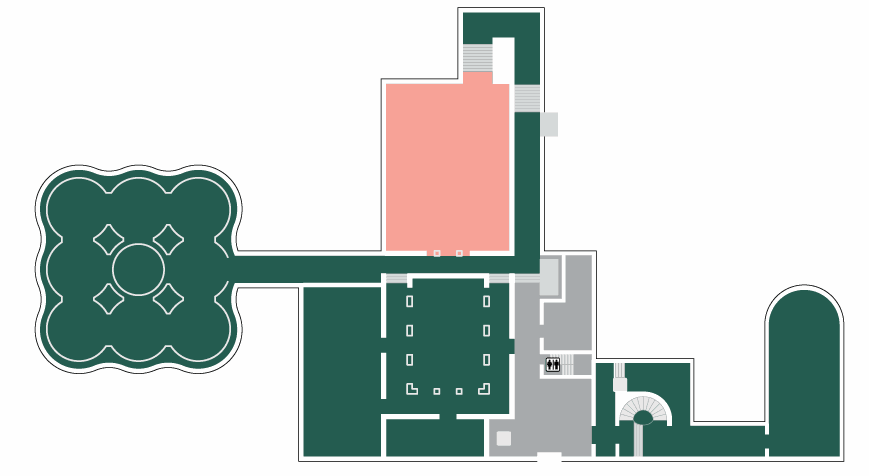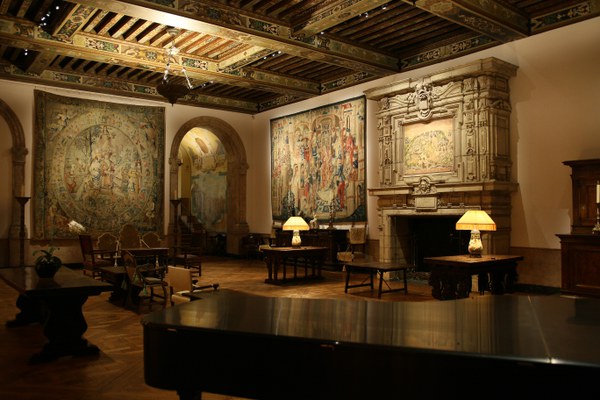The Music Room was designed in 1927 by Lawrence Grant White of the New York City firm of McKim, Mead & White. The ceilings, floor, and murals, commissioned by the Blisses in 1928, draw inspiration from Renaissance interiors and Baroque paintings. Just as it did in the Blisses’ time, the Music Room today serves as a venue for intellectual discourse, musical programs, and scholarly lectures.

The Making of the Music Room
In 1927, the Blisses acquired two sixteenth-century Italian Verona marble arches and a sixteenth-century chimneypiece from the Château de Théobon in France. These provided the aesthetic framework for the Music room, which the Blisses envisioned as being Renaissance in style. After failing to find antique Renaissance ceiling and flooring, the Blisses commissioned the Parisian designer Armand Albert Rateau to fabricate the room's beamed Renaissance-style ceiling. This reproduction was inspired by a sixteenth-century ceiling in the Salle des Gardes (Guardroom) at the Château de Cheverny near Paris.
The Blisses engaged the American artist Allyn Cox to paint murals for the room’s adjacent corridor and entrance staircase. For the staircase murals, the more ambitious of the two projects, Cox compartmentalized the space using trompe-l'oeil Baroque-style architectural frames. Within these, he painted scenes involving classical architectural ruins and various Italian Renaissance–style buildings as well as people resting or engaged in work activities, in the manner of eighteenth-century paintings of classical ruins. Artworks and objects are exhibited in the Music Room much as they were when the Blisses were in residence at Dumbarton Oaks. Sculptures sit on Italian Renaissance cabinets, and paintings hang alongside tapestries.
The Blisses used the Music Room for musical programs, scholarly lectures, and intellectual discourse. It continues to serve these purposes at Dumbarton Oaks, hosting an annual public lecture series and the Friends of Music at Dumbarton Oaks concert series, inaugurated in 1946.

